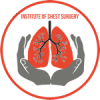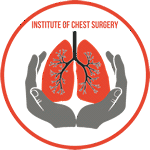Chest trauma, resulting from accidents, falls, sports injuries, or violent incidents, can have far-reaching consequences beyond immediate pain and discomfort. The chest houses vital organs, including the heart, lungs, and major blood vessels, making it particularly susceptible to injury. While the immediate focus is often on treating the primary injury, it is essential to understand that chest trauma can lead to various medical conditions and complications, some of which may manifest days or even weeks after the initial incident. In this article, we will explore the potential long-term effects of chest trauma, the associated medical conditions, and the importance of seeking timely medical attention.
1. Immediate Effects of Chest Trauma
When chest trauma occurs, the most apparent and immediate effect is pain and difficulty breathing. Depending on the severity of the injury, the patient may experience fractured ribs, punctured lungs, or damage to other structures within the chest cavity. Immediate medical attention is crucial to assess and stabilize the patient’s condition.
2. Medical Conditions Resulting from Chest Trauma
a. Pneumothorax (Collapsed Lung)
One of the common complications of chest trauma is pneumothorax, also known as a collapsed lung. It occurs when air leaks into the space between the lung and the chest wall, causing the lung to collapse partially or fully. Symptoms may include sudden chest pain, shortness of breath, and rapid heartbeat.
b. Hemothorax
Hemothorax is a condition characterized by the accumulation of blood in the pleural cavity surrounding the lungs. It can result from severe chest injuries that damage blood vessels. Hemothorax can lead to breathing difficulties, chest pain, and decreased blood oxygen levels.
c. Flail Chest
Flail chest occurs when multiple ribs are fractured in more than one place, causing a segment of the chest wall to become detached from the rest of the ribcage. This condition can impair lung function, leading to respiratory distress and decreased oxygenation.
d. Cardiac Contusion
Chest trauma can cause a cardiac contusion, which is a bruise or injury to the heart muscle. While some cardiac contusions heal on their own, severe cases may result in arrhythmias or other heart-related complications.
e. Aortic Dissection
In rare instances of severe chest trauma, there is a risk of aortic dissection, where the inner layers of the aorta (the main artery carrying blood from the heart) tear, leading to internal bleeding and life-threatening consequences.
3. Delayed Onset Complications
In addition to the immediate effects, chest trauma can also lead to delayed onset complications, where symptoms may not manifest until hours, days, or even weeks after the initial injury. Some of these complications include:
a. Pulmonary Embolism
Chest trauma, especially if there’s a prolonged period of immobilization, increases the risk of blood clots forming in the legs (deep vein thrombosis). These clots can break loose and travel to the lungs, causing a potentially life-threatening condition known as pulmonary embolism.
b. Post-Traumatic Pneumonia
Patients with chest trauma are susceptible to developing pneumonia due to impaired lung function, reduced mobility, and the risk of aspiration.
c. Chronic Pain and Disability
Severe chest trauma can lead to long-term pain and disability, affecting the patient’s ability to perform daily activities and impacting their quality of life.
4. Importance of Timely Medical Attention
Given the potential complications associated with chest trauma, seeking immediate medical attention is crucial. Prompt evaluation and treatment can prevent or minimize the impact of certain conditions and ensure better outcomes for the patient.
a. Diagnosis and Stabilization
A thorough medical examination, imaging studies (such as X-rays or CT scans), and diagnostic tests are essential to assess the extent of the chest trauma and identify any associated injuries.
b. Treatment and Management
Treatment strategies will vary depending on the specific medical conditions resulting from the chest trauma. It may include chest tube insertion for pneumothorax or hemothorax, pain management, antibiotics for infections, and cardiac monitoring for cardiac contusions.
c. Rehabilitation and Follow-Up
Rehabilitation, including breathing exercises and physical therapy, plays a crucial role in helping patients recover and regain lung function after chest trauma. Regular follow-up visits with medical professionals ensure that any potential complications are detected early and addressed promptly.
Conclusion
Chest trauma can have significant implications for a person’s health, leading to various medical conditions and complications. The immediate effects may include collapsed lungs, hemothorax, and flail chest, among others. Additionally, delayed onset complications like pulmonary embolism and post-traumatic pneumonia can occur, highlighting the importance of vigilance and timely medical attention.
As a lung surgeon, Dr. Mohan Venkatesh Pulle understands the intricacies of chest trauma and its potential consequences. If you or someone you know experiences chest trauma, it is imperative to seek immediate medical care to ensure a comprehensive evaluation and appropriate management, ultimately leading to the best possible recovery and outcomes.







